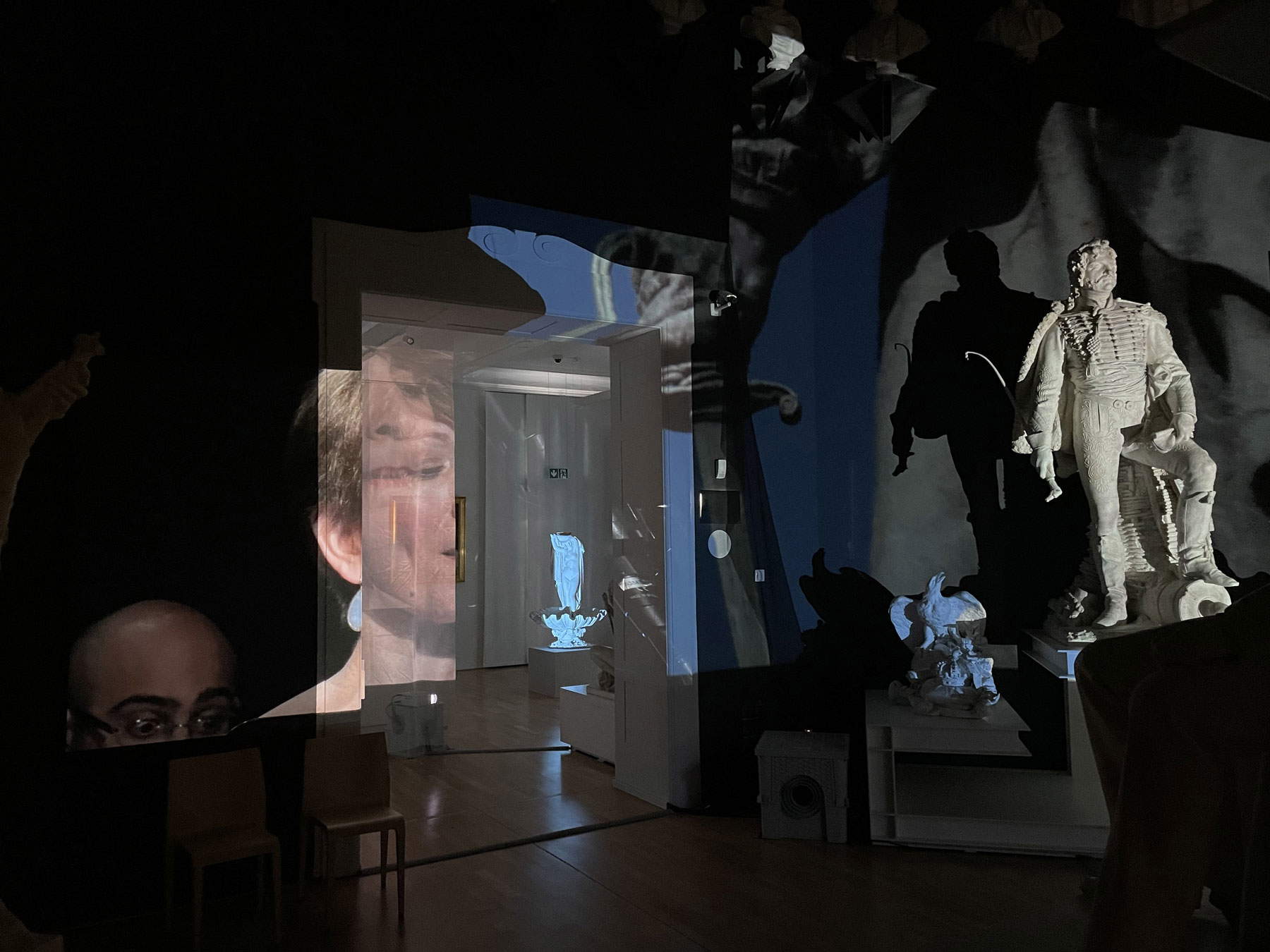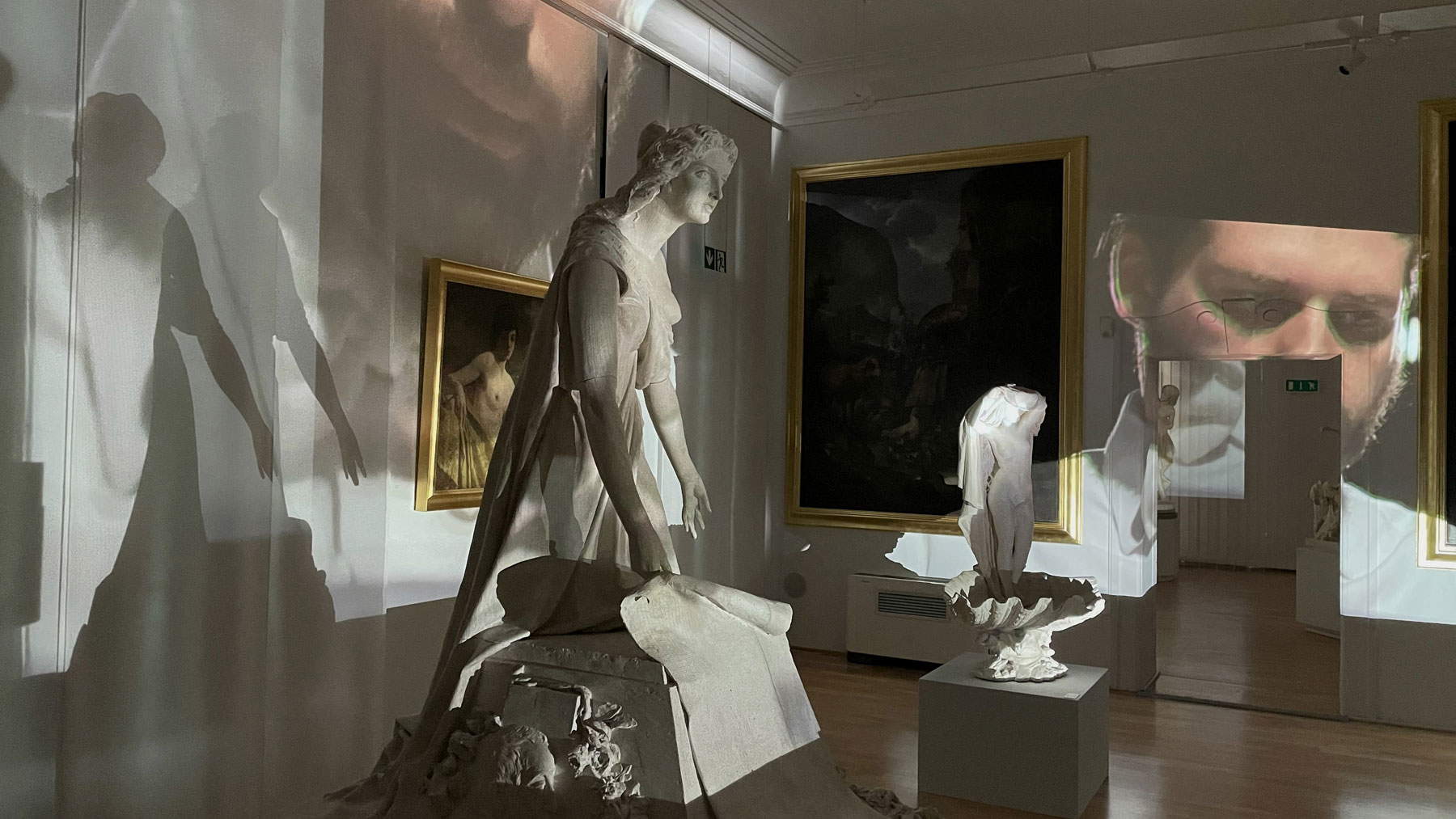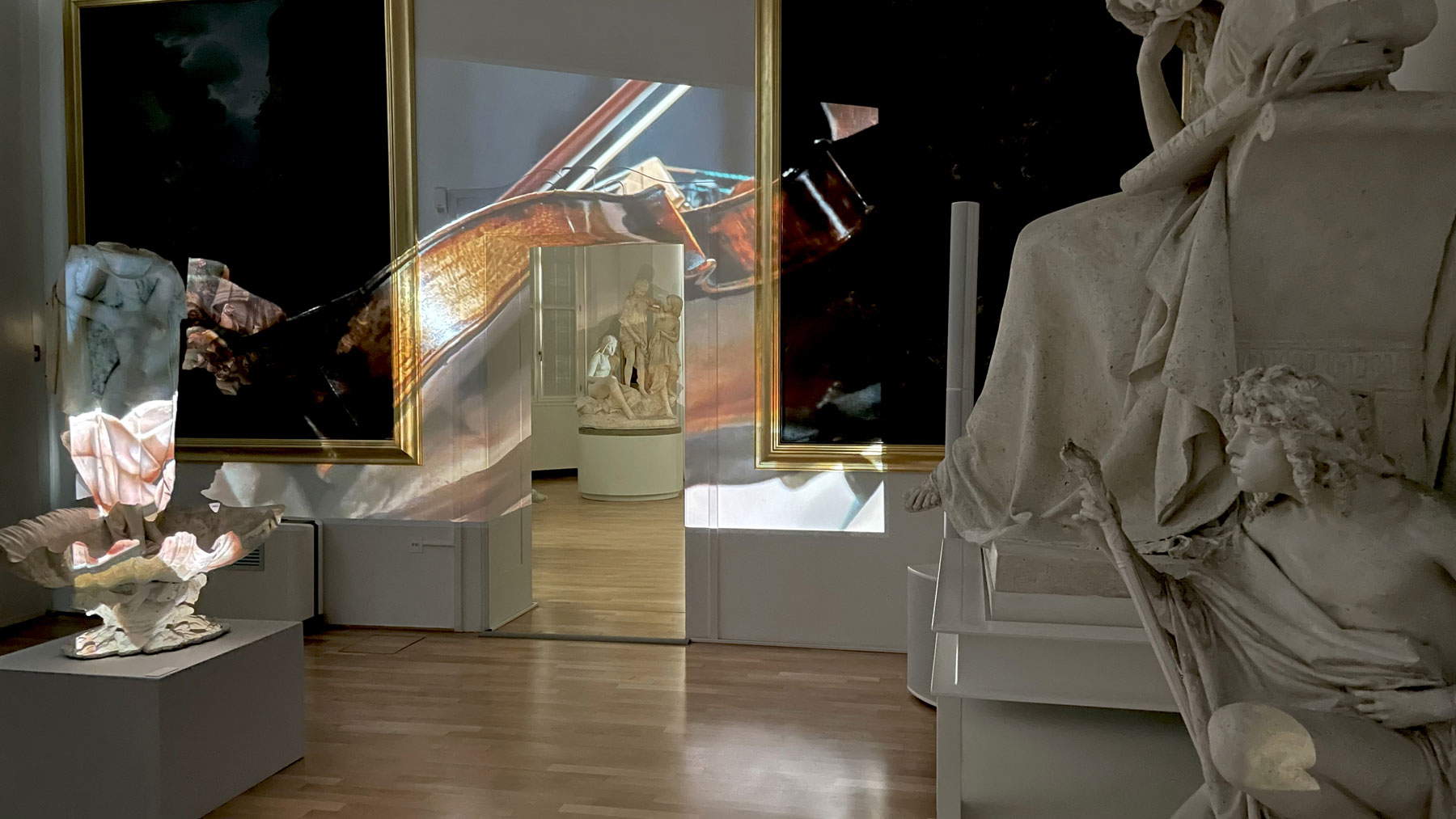In celebration of its first birthday, the Mendrisiotto Art Museum Network, which includes the Vincenzo Vela Museum, the m.a.x. museo in Chiasso, the Mendrisio Art Museum, the Pinacoteca Cantonale Giovanni Züst in Rancate and the Architecture Theater, is offering free admission, guided tours and events at the five museums in the Network on Sunday, Sept. 5. These include a meeting at the Vincenzo Vela Museum in Ligornetto at 5 p.m. with artist and filmmaker Adriano Kestenholz, author of the video installation Vincenzo Vela. The Dream of Matter set up in the rooms of the museum venue until September 12, 2021. The installation is part of a larger transmedia project promoted on the occasion of the bicentennial of Vincenzo Vela’s birth. The entire project, which includes a music documentary and a series of seven music clips, is available on the RSI Radiotelevisione svizzera website. In this interview, edited by Ilaria Baratta, Adriano Kestenholz tells us about the project.
IB. On the occasion of the bicentennial of Vincenzo Vela’s birth, you decided to dedicate a music video installation and a documentary to the Swiss artist. Why did you want to pay homage to him? What links you to Vincenzo Vela?
AK. I have always been fascinated by gypsotecas. I remember very well the emotional shock I had on my first visit to Canova’s gipsoteca in Possagno. The white! The white on white, the variations of white, its shades, light and shadows: the volume, the plasticity, the forms exclusively generated by the encounter between light and white. This is what initially led me to become interested in Vincenzo Vela’s work: his house-museum, the place where his projects, his ideas, his plaster models were kept. An authentic, magical place, imbued with the spirit of the artist.
As a director, he created a site-specific video installation that links Vincenzo Vela’s works preserved in the museum dedicated to him with images and music: almost a total work, one could say. What perceptions and sensations do you want to trigger in the visitor through this totalizing work? What relationship is created between the plaster models and the respective works housed in different places in Italy, France and Switzerland?
I believe that in the field of art, totality is utopia, so I would not talk too much about a totalizing work; indeed, if applied programmatically, the idea of a total work of art risks bringing with it quite a few impasses . Of the work, no system is given. Works do not allow themselves to be harnessed and hardly submit to a principle of mastery, either of their creator (the artist) or of their user who in enjoying them recreates and reconstructs them in his or her own way. It is precisely this element of incompleteness that plays and acts in my video installation and induces the viewer to complete the work with his own imagination. I have always remained attached to Lessing’s statement that " we never see without at the same time also imagining. " So if there is a minimal form of intentionality in this project, it is perhaps to create an immersive device capable of allowing the visitor his or her own freedom of imagination. The installation consists of several video sequences synchronized with each other and projected on the walls of the museum, on plaster models and on some semi-transparent veils: these are sequences that loop, sequences with respect to which the visitor becomes a kind of flaneur . Depending on the moment and the place where the visitor is, the different projections of the installation release their meaning, so to speak, as flowers release a scent when we linger near them or pass by them. The encounter between the recursiveness of the projections and the path implemented by the viewer creates countless relationships between the plaster models and the images of the respective marble and bronze works placed in different places far from the house-museum. The far becomes near. The immersive space of the installation invites a journey beyond the architectural precincts of the museum.
 |
| Adriano Kestenholz, Vincenzo Vela. The dream of matter, installation view |
 |
| Adriano Kestenholz, Vincenzo Vela. The dream of matter, installation view |
 |
| Adriano Kestenholz, Vincenzo Vela. The dream of matter, installation view |
 |
| Adriano Kestenholz, Vincenzo Vela. The dream of matter, installation view |
 |
| Adriano Kestenholz, Vincenzo Vela. The dream of matter, installation view |
What aspect of Vincenzo Vela’s art do you intend to emphasize with the title “The Dream of Matter”?
Vincenzo Vela. The Dream of Matter is a deliberately enigmatic title. A title that launches issues rather than answering questions. How does a project materialize? What is the subject? Is matter also a dream? Does matter dream? Then there is an allusion in the title to the apparent immateriality of the digital image: what is the matter in which Vela’s work goes to be embodied from the moment it is transposed into another language? What matter are we talking about when a work is repurposed through other media?
What gave you the idea to make this video installation? How did you realize it concretely?
I have always noticed that in classical film productions a lot of energy and resources are consumed in order to flesh out only one form of expression; namely a documentary, a fiction or perhaps a series. The idea of declining a “subject” through different media vectors, of making it transmedia, so to speak, stems precisely from this observation and from a kind of economy in production. Said somewhat ironically, my idea of transmediality, stems from the concept of recycling, therefore of optimizing productive resources. The visual materials that make up the three vectors of the project (the video installation, the documentary, and the webclips) are more or less always the same but declined and edited according to each vector in a different and unique way with respect to the common thread that is the music.
The musical composition accompanying the video installation is by Andreas Pflüger and is inspired by seven themes in the Ticino sculptor’s work. Can you explain further what is meant.
The basis of the project is music understood as a universal language capable of emotionally amplifying what we feel in front of works of art. In this case, the plaster casts and sculptures of Vincenzo Vela. In audiovisual productions music usually enters in a second moment, it comes, so to speak, in addition to the work previously done on the image. In this project, however, as in my other works of the documentary-installation genre ( Mosaics of Piazza Armerina, based on a composition by Carlo Florindo Semini or Segantinian a based on a composition by Luigi Quadranti) the music actually precedes the making of the film and installation. So, after freely sourcing seven themes related to Vincenzo Vela’s work, I wanted to leave it to the flair of Andreas Pflüger, a composer with whom I have been collaborating for years, to interpret these themes with his own sensibility. The result was a composition for soprano and ensemble, in seven movements. The entire video installation, which is presented to the visitor as a multichannel installation, is thus based on the performance of the musical performance, conducted by maestro Alessandro Calcagnile. If I had to put an exergue to this work of mine, I would quote Bernard of Clairvaux’s phrase “Listen and you will see!”
What added value does it give to propose a video installation dedicated to Vela right in the artist’s house-museum?
The video installation is but one of the forms of contemporary expression capable of rededicating yesterday’s art to our time by removing it from being merely inert memory. Places like Vincenzo Vela’s house-museum are inexhaustible places, open pages susceptible to continuous rereading, powerful containers of culture, beauty and creativity.
Warning: the translation into English of the original Italian article was created using automatic tools. We undertake to review all articles, but we do not guarantee the total absence of inaccuracies in the translation due to the program. You can find the original by clicking on the ITA button. If you find any mistake,please contact us.